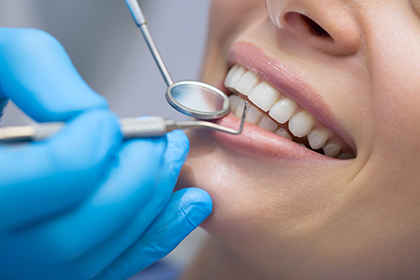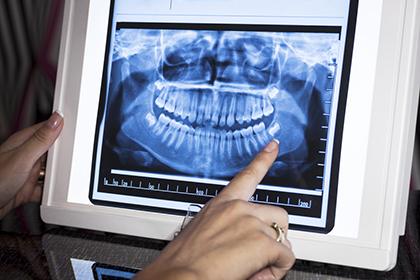Crowns and Bridges
Dental Crowns
Also known as a tooth cap, dental crowns can cover or fix a variety of tooth problems. From hiding chips and cracked teeth to covering a dental implant or a tooth post-root canal, a dental crown is a very versatile restorative option. Our porcelain crowns are very durable, fit comfortably, and look like your surrounding natural teeth.
The dental crown procedure takes place over a series of appointments. In order to have a crown created for you, we first need to take an impression of the tooth that needs to be covered. For a snug fit, we may have to remove some enamel from the tooth before taking the impression if it’s otherwise intact. We use the impression to create a temporary crown for you to wear while the lab makes your new crown. Once the restoration is ready, we place and bond the crown on your tooth.
Uses for Dental Crowns:
- Cover a cracked tooth
- Cover a large filling
- Protect after excessive wear and tear
- Protect and strengthen a tooth after a root canal
- Replace a missing tooth in conjunction with a dental implant
How long will a dental crown last?
When cared for properly, a dental crown can last up to 15 years. Over time, regular wear and tear can take a toll on your crown and it’s not uncommon to need a slight adjustment over time.
How do you take care of dental crowns?
Your dental crown should be cared for just like a natural tooth. Ensure you’re still brushing twice per day and flossing daily. It’s also important to keep your six-month appointments for routine cleanings so we can inspect your dental crown for any damage.
Fixed Dental Bridge
The most common cause for a fixed bridge includes missing one or more teeth. The bridge consists of a dental crown on either side of the space left by a missing tooth—this is known as an “abutment”. Between the crowns lie false teeth that effectively bridge the gap in your smile. A fixed bridge helps stop surrounding teeth from shifting into the opening and keeps your proper face shape and bite.
When are full dental bridges better for me than dental crowns?
Dental bridges are often used when you’re missing more than one tooth. Dental crowns are an excellent restoration to cap a damaged natural tooth or dental implant, but bridges work to close the gap left behind by several missing teeth.
“Top Notch. I’d been seeing another dentist for 15+ years when my carrier dropped him … What an improvement. I’ve had some tricky dental issues and he’s worked with me through each one. … 100% recommend this office!”


